On Sunday 8th November, 1992, M. Michel Legras, Consul General for France, unveiled the long-awaited John Winch tapestry.
Commissioned and designed five years earlier for the Bicentennary, John Winch’s Laperouse Tapestry has a special story.
In 1987 John spent two months in Aubusson supervising the dying of the earthy, subtle shades required to weave his background design. 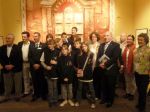 Then a number of orders for the bicentenary of the French Revolution delayed the completion. Tapisseries de France had intended to donate the work in exchange for promotion in Australia but after going bankrupt requested that John donate several sculptures in exchange. John agreed to give two, UTA-Air France agreed to transport them to France, and the tapestry was finally released and flown to Sydney.
Then a number of orders for the bicentenary of the French Revolution delayed the completion. Tapisseries de France had intended to donate the work in exchange for promotion in Australia but after going bankrupt requested that John donate several sculptures in exchange. John agreed to give two, UTA-Air France agreed to transport them to France, and the tapestry was finally released and flown to Sydney.
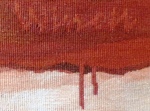 (Photos left above 8th May 2009 of Principal, Miguel Quillent, teacher Evelyne Petijean and students from the College Jacques Brel, Villers Bretonneux, along with Mayor of Randwick City Council, Bruce Notley-Smith, and the French Consul-General, Lionel Majeste-Larrouy; photo left below of John Winch’s signature woven into the tapestry).
(Photos left above 8th May 2009 of Principal, Miguel Quillent, teacher Evelyne Petijean and students from the College Jacques Brel, Villers Bretonneux, along with Mayor of Randwick City Council, Bruce Notley-Smith, and the French Consul-General, Lionel Majeste-Larrouy; photo left below of John Winch’s signature woven into the tapestry).
Details of the 9 panels as they appear on the Tapestry:
From a Friends Newsletter of 1992:
We thank and honour you John. Your shining gesture is in the spirit of the 18th century ideals of humanism and generosity which both inspired and guided the Laperouse expedition.
 Extracted from Commemoration Breakdown by Chris Ashton, Sydney Morning Herald 29 February 1992:
Extracted from Commemoration Breakdown by Chris Ashton, Sydney Morning Herald 29 February 1992:
“Conceived by Dr Anne-Marie Nisbet, lecturer in French at the University of NSW, the idea was that it should be woven in France, where tapestry is an ancient and revered art form, from a design by an Australian artist, symbolising Franco-Australian amity. In May 1988, a Rozelle sculptor and painter, John Winch, was chosen. He would be paid $10,000, courtesy of Dr Michel Lefebvre, a scientist and managing director of the Syrinx Research Institute in Sydney, and a Sydney resident and patron of fine arts for 15 years. “Winch is one of the most talented artists of his generation,” says Dr Lefebvre, who started buying Winch’s works in 1983. Winch’s etchings hang in the Cabinet room of Federal Parliament and in the permanent collections of the National Gallery, most regional and State public galleries in Australia and the Bibliotheque National, Paris.
One recurring theme of his art is real or imagined expeditions of Western conquest which never returned, but whose relics have since become religious icons to the peoples they tried to subdue. Thus the La Perouse tapestry, 3 metres by 2 metres, pays homage to his Pacific voyage. At its centre are nine panels depicting items from the shipwrecks salvaged by Solomon Islanders, who have sanctified them to atone, in Winch’s imagination, for their massacre of the survivors. Tapisserie de France, a weaving firm in the provincial city of Aubusson, which is famous for its tapestries, agreed to forgo a fee, asking only in exchange that exhibitions be arranged with commercial galleries in Australia to promote its wares in an untapped market.
In 1988 Winch flew to Aubusson to supervise the weavers. “They were shocked by such strong colours,” he recalls, “but the thing about France is that the artist is God and they’ll do anything to get the colours the artist wants.” He was impressed by the proprietor, Jean Laurent. For his part, Laurent was hugely impressed by photos Winch showed him of a series of sculptures, shown by the Irving Gallery, of shrines created by Sicilian peasants to medieval Venetian traders who had perished in an expedition to their homeland.
The hope was that the tapestry would be ready by the year’s end so that Winch could add the central panels in Sydney in time for the museum opening in February. Delays put paid to this, including last-minute commissions to honour France’s own 1989 Bicentenary.
Two years passed. In May last year Mrs Carole Roussel, widow of the late Pierre Roussel, a former French commercial consul and a long-time Australian resident and catalyst of the museum project, visited Paris where she inquired after the tapestry. Tapisserie de France, she discovered, was bankrupt. She contacted Jean Laurent, who had failed to mention this to the museum. The tapestry, he explained, was ready, but since he could no longer promote his own wares in Australia, he would exchange it for sculptures from Winch’s Venetian series, to the value of the work on the tapestry valued at Fr 75,000(about $A18,000). Mrs Roussel was stunned. So was Winch. Strapped for cash, The Friends of the La Perouse Museum was in no position to help. Gough Whitlam has declined to comment.
Winch’s patron, Dr Lefebvre, is sanguine. “My feeling is that there will be a tapestry, it will be superb, and that it doesn’t matter how late it is,” he says. “When you sponsor an art project, it is very rare that it is completed on time or in budget.” Understandably, Winch wants to see his tapestry hung, but not at any price. Jean Laurent wants five sculptures of the Venetian series, market value$10,000 each, in exchange for the tapestry, which has no commercial value outside its intended purpose. That’s out of the question, says Winch. He insists that if one sculpture is not enough, so be it. He’ll explore other possibilities, possibly creating an abstract sculpture as the museum’s centrepiece. “I’m disappointed but not surprised,” he shrugs. “This happens in the art world all the time.”
John Winch (1944 – 2007)
John Winch had more than 80 one-man exhibitions and is featured in many Australian galleries, in museums in New York and Paris, in university collections and public and government buildings, including Parliament House, Canberra. He has been a finalist in the Sulman, Wynne and Dobell prizes. His wards include the new England Art Museum Painting Prize and the 2000 Kedumba Drawing Award for an intriguing collection of large illustrated envelopes stamped and posted in Paris to himself in Australia.

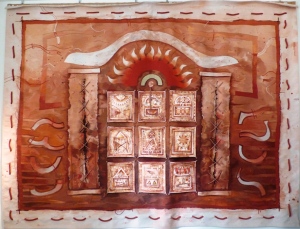
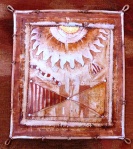

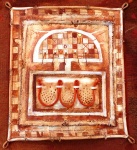
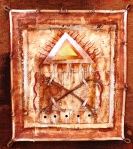
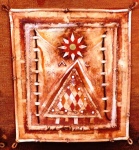
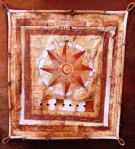
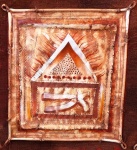
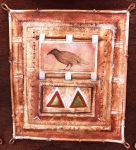

You must be logged in to post a comment.